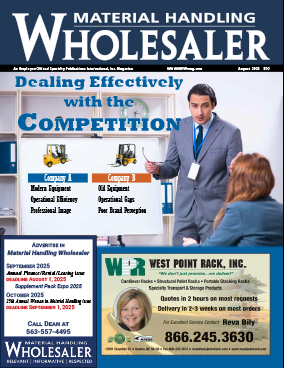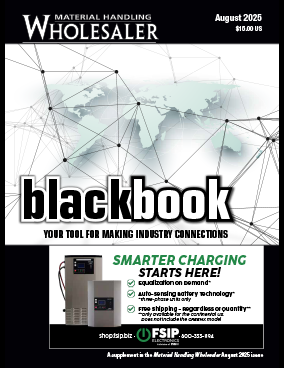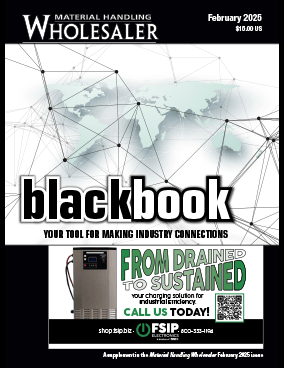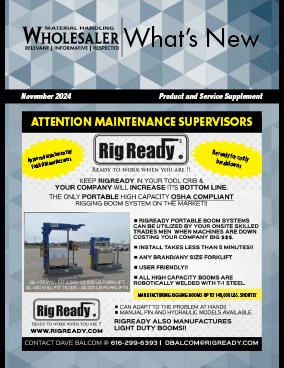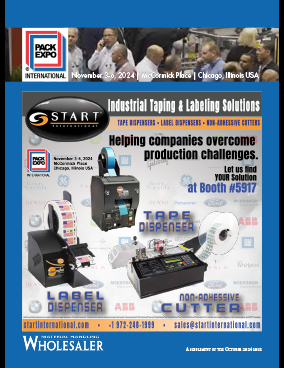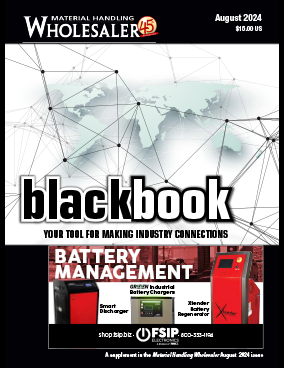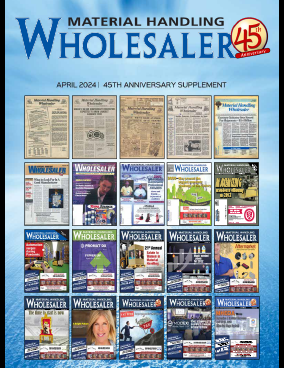It always amazes me how as dealers, we all tend to organize ourselves the same way. I suppose I really shouldn’t be amazed. In any industry, there are methods and processes that are proven to be efficient. These methods become “best practices” in the industry, and the effectiveness of the process should naturally draw most of the participants to mimic the most productive model.
Financially the “best practices” in our industry call for the dealership to be separated into 5 or 6 distinct “profit centers” (or departments). We do this because the purpose, expectations, and market focus of each profit center is different. The range of sales revenue, gross profit, expenses, and manpower varies greatly between departments. Consequently, the goalsetting standards and metrics used to measure progress are equally diverse.
Normally dealerships define these profit centers as follows:
- New Equipment Sales
- Used Equipment Sales
- Rental Department
- Parts Department
- Service Department
- Integrated Solutions (sometimes included with new sales – other times separated)
There is nothing inherently wrong with this separation. In order to set attainable goals and grow all facets of our business, we must employ a segmented approach. This helps us to properly plan where our investments in people, assets, and inventory will provide the best return.
When we hire team members for our departments, I think it’s a natural tendency for employees to establish personal goals for success, that are in concert with departmental goals and objectives. This is more than simple “esprit de corps”. Personal commitment to departmental accomplishments may be tied to financial incentives that reward departmental achievement.
I have observed that the most successful dealerships SHARE many of their goals with their rank-and-file employees. You have heard me say before that it’s impossible to hit a target that you never hang on the wall. Whether those targets are financial, operational, or behavioral, if you share these objectives, every team member will most likely view them through the prism of their role in their assigned department.
All this focus on departments has a downside however that we routinely ignore. One of my favorite business axioms is that “Departmentalization leads to Compartmentalization”. As an example: If my role, my activities, and my rewards are predicated on the success of the RENTAL departments, I will naturally prioritize my efforts based on what is best for the RENTAL department.
The emergence of this “silo” mentality is a common internal enemy in any multi-profit center organization. Naturally, we tend to look out for our own interests. Therefore, MY involvement in any particular issue may be mitigated or enhanced by the value that it represents to MY department. By default, my interest is to preserve profitability in MY silo. This danger is more insidious than it seems. Silos can operate on more than one level. Not only do we accommodate departmental silos, but we can also erect branch-based silos. Territorial disputes, inventory allocations, and training support are all areas where our efforts are affected by branch silo concerns.
Management may view silo battles, simply as dedicated employees paying attention to the details. We want our employees to be engaged. We want them to watch out for the bottom line. We want them to care about performance. But have we considered at all, how the CUSTOMER is viewing our silo-centric activity?
The glaring gap in our customer experience effort may be grounded in our inability (or unwillingness) to defeat the silo mentality. Through all of this noise, one thing remains clear:
The customer couldn’t care less about our departments!
Customers are not interested in what department is responsible for crafting the solution to their problem. This shouldn’t be a surprise…… customers care about THEMSELVES.
- Customers care about the part that was ordered next day air, actually showing up the next day, AND BEING INSTALLED the next day.
- Customers care that we sent the right size forks or the right attachment on the rental unit.
- Customers care about response time – especially when they have trucks to unload today.
- Customers care about quality control, PM completion, and parts availability.
- Customer care about us “getting it”, and about us understanding their urgency.
It’s not their job to care about US. It’s our job to care about THEM. They want our relationship with them to be efficient, timely, intuitive, and productive. They want us to anticipate their needs and make their material handling issues almost invisible.
None of this can really happen if we are not dedicated to deconstructing silos. If we don’t take silos seriously, we end up with customer communications that sound like:
- I told the parts department that we needed to order it NDA.
- The service department was supposed to check the rental before it left.
- Sales were supposed to contact you about the warranty coverage on that repair.
- It’s not my fault.
- That’s not my job.
We don’t want to think that we would ever allow a customer experience that includes these responses. The departmental blame game, however, is usually employed as a “last-ditch effort” by a customer-facing employee, attempting to explain the failure. Its roots are fed by the silos, but there are both policy and communication tools that can create an environment where the customer is shielded from ever being subject to our silo-based excuse-making.
In my next column (Sept 2021), I will be recommending some operational and policy measures that put critical internal communications and processes in focus. I will also outline suggested customer contact protocols when delays emerge, and commitments cannot be kept. In the October issue, I will challenge dealers to rethink their systems of departmental incentives and rewards.
We cannot expect to deconstruct silos if the motivation behind building them remains in place! We mix our message when we say that customer satisfaction is our number one priority, then base our entire reward system solely on profitability. Although we tend to universally use a system that rewards RESULTS (sales, profits, and expenses), it may be prudent to investigate a system that rewards BEHAVIORS. My experience has been that maintaining accountability on adherence to prescribed behaviors produces sustainable results. This doesn’t mean that your managers are in lockstep and aren’t empowered to make their own decisions. What it does mean however is that the framework and model for executing everyday processes is adjudicated by a set of written standards. Following those standards is defined as “proper behavior”.
In a post-pandemic economy, will be faced with both pitfalls and opportunities. As we return to normal, we have the perfect chance to realign our priorities and demolish the barriers that so often keep us from meeting our CX objectives.
About the Author:
Dave Baiocchi is the president of Resonant Dealer Services LLC. He has spent 39 years in the equipment business as a sales manager, aftermarket director, and dealer principal. Dave now consults with dealerships nationwide to establish and enhance best practices, especially in the area of aftermarket development and performance. E-mail editorial@mhwmag.com to contact Dave.





